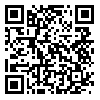1. 1. Estévez A, Jáuregui P, Sánchez-Marcos I, López-González H, Griffiths MD. Attachment and emotion regulation in substance addictions and behavioral addictions. J Behav Addict. 2017;6(4):534–44. [
DOI]
2. 2. Yau YHC, Potenza MN. Gambling disorder and other behavioral addictions: recognition and treatment. Harv Rev Psychiatry. 2015;23(2):134–46. [
DOI]
3. 3. World Health Organization. Guide to drug abuse: epidemiology. Department of Mental Health and Substance Dependence Noncommunicable Diseases and Mental Health Cluster, World Health Organization; 2000.
4. 4. Lydon-Staley DM, Cleveland HH, Huhn AS, Cleveland MJ, Harris J, Stankoski D, et al. Daily sleep quality affects drug craving, partially through indirect associations with positive affect, in patients in treatment for nonmedical use of prescription drugs. Addict Behav. 2017;65:275–82. [
DOI]
5. 5. Martin-Fardon R, Weiss F. Perseveration of craving: effects of stimuli conditioned to drugs of abuse versus conventional reinforcers differing in demand. Addict Biol. 2017;22(4):923–32. [
DOI]
6. 6. Preston KL, Kowalczyk WJ, Phillips KA, Jobes ML, Vahabzadeh M, Lin J-L, et al. Context and craving during stressful events in the daily lives of drug-dependent patients. Psychopharmacology (Berl). 2017;234(17):2631–42. [
DOI]
7. 7. Caselli G, Gemelli A, Querci S, Lugli AM, Canfora F, Annovi C, et al. The effect of rumination on craving across the continuum of drinking behaviour. Addict Behav. 2013;38(12):2879–83. [
DOI]
8. 8. Witkiewitz K, Bowen S. Depression, craving, and substance use following a randomized trial of mindfulness-based relapse prevention. J Consult Clin Psychol. 2010;78(3):362–74. [
DOI]
9. 9. Luthans BC, Luthans KW, Jensen SM. The impact of business school students’ psychological capital on academic performance. Journal of Education for Business. 2012;87(5):253–9. [
DOI]
10. 10. Hormes JM, Rozin P. Does “craving” carve nature at the joints? Absence of a synonym for craving in many languages. Addict Behav. 2010;35(5):459–63. [
DOI]
11. 11. Zimmermann K, Walz C, Derckx RT, Kendrick KM, Weber B, Dore B, et al. Emotion regulation deficits in regular marijuana users. Hum Brain Mapp. 2017;38(8):4270–9. [
DOI]
12. 12. Chaves TV, Sanchez ZM, Ribeiro LA, Nappo SA. Crack cocaine craving: behaviors and coping strategies among current and former users. Rev Saude Publica. 2011;45(6):1168–75. [
DOI]
13. 13. Aldao A, Nolen-Hoeksema S, Schweizer S. Emotion-regulation strategies across psychopathology: A meta-analytic review. Clin Psychol Rev. 2010;30(2):217–37. [
DOI]
14. 14. Eskandari H, Helmi S. The role of impulsivity, risk-taking, and sensation-seeking in people prone to substance abuse. Appl Psychol. 2014;2(6):48–60.
15. 15. Mezzich AC, Tarter RE, Feske U, Kirisci L, McNamee RL, Day B-S. Assessment of risk for substance use disorder consequent to consumption of illegal drugs: psychometric validation of the neurobehavior disinhibition trait. Psychol Addict Behav. 2007;21(4):508–15. [
DOI]
16. 16. Krasikova DV, Lester PB, Harms PD. Effects of psychological capital on mental health and substance abuse. Journal of Leadership & Organizational Studies. 2015;22(3):280–91. [
DOI]
17. 17. Hopwood CJ, Schade N, Matusiewicz A, Daughters SB, Lejuez CW. Emotion regulation promotes persistence in a residential substance abuse treatment. Subst Use Misuse. 2015;50(2):251–6. [
DOI]
18. 18. Szasz PL, Szentagotai A, Hofmann SG. Effects of emotion regulation strategies on smoking craving, attentional bias, and task persistence. Behav Res Ther. 2012;50(5):333–40. [
DOI]
19. 19. Goodboy AK, Kline RB. Statistical and practical concerns with published communication research featuring structural equation modeling. Communication Research Reports. 2017;34(1):68–77. [
DOI]
20. 20. Salehi Fadardi J, Bar Erfan Z. The effect of drugs-attention control training program on drug-related attentional bias and improving other indices of recovery. Journal of Education and Psychology. 2010; 11(2), 29-56. [
DOI]
21. 21. Gratz KL, Roemer L. Multidimensional assessment of emotion regulation and dysregulation: development, factor structure, and initial validation of the difficulties in emotion regulation scale. Journal of Psychopathology and Behavioral Assessment. 2004;26(1):41–54. [
DOI]
22. 22. Mazaheri M. Psychometric Properties of the Persian Version of the Difficulties in Emotion Regulation Scale) DERS-6 & DERS-5- Revised (in an Iranian Clinical Sample. Iran J Psychiatry. 2015;10(2):115–22.
23. 23. Luthans KW, Jensen SM. The linkage between psychological capital and commitment to organizational mission: a study of nurses. J Nurs Adm. 2005;35(6):304–10. [
DOI]
24. 24. Saadat S, Davarpanah SH, Saeedpour F, Samiee F. The role of psychological capital (i.e., hope, optimism, self-efficacy, resilience) in student’s academic commitment. Education Strategies in Medical Sciences. 2019;12(3):1–11. [Persian] [
Article]
25. 25. Cassidy T, Long C. Problem-solving style, stress and psychological illness: development of a multifactorial measure. Br J Clin Psychol. 1996;35(2):265–77. [
DOI]
26. 26. Azizi M, Sedaghat Z, Direkvand-Moghadam A. Effect of critical thinking education on problem solving skills and self-esteem in Iranian female students. Journal of Clinical & Diagnostic Research. 2018;12(1):54–63.







